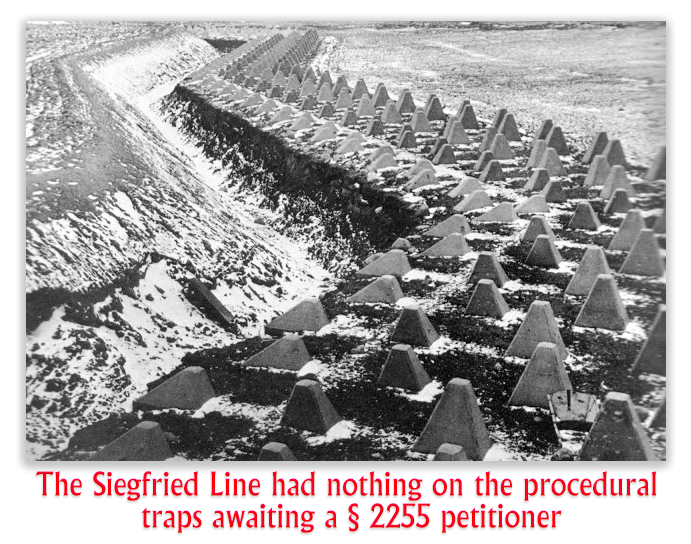We post news and comment on federal criminal justice issues, focused primarily on trial and post-conviction matters, legislative initiatives, and sentencing issues.

BIG CRIMINAL DECISIONS STILL PENDING WITH ONLY TWO WEEKS OF SCOTUS TERM LEFT
The Supreme Court held two opinion days last week, but the most-watched criminal cases – United States v. Taylor, Concepcion v. United States and Ruan v. United States – remain among the 18 opinions yet to be issued before the Court’s term ends on June 30.
 Most people expect the two “big” cases, New York State Rifle & Pistol Assn v. Bruen (a 2nd Amendment case) and Dobbs v. Jackson Women’s Health Organization (the possibly-leaked abortion decision) to happen on the last day. But Taylor, which concerns whether an attempted offense that would be a “crime of violence” for application of 18 U.S.C. § 924(c) – the mandatory consecutive sentence for using a gun – is a “crime of violence” if it is only attempted but not completed – has been hanging around for six months since its December argument. Concepcion, which concerns proper resentencing considerations in First Step Section 404(b) resentencing, and Ruan, which considers physician liability under 21 USC 841(a), was argued in the Court’s February sitting.
Most people expect the two “big” cases, New York State Rifle & Pistol Assn v. Bruen (a 2nd Amendment case) and Dobbs v. Jackson Women’s Health Organization (the possibly-leaked abortion decision) to happen on the last day. But Taylor, which concerns whether an attempted offense that would be a “crime of violence” for application of 18 U.S.C. § 924(c) – the mandatory consecutive sentence for using a gun – is a “crime of violence” if it is only attempted but not completed – has been hanging around for six months since its December argument. Concepcion, which concerns proper resentencing considerations in First Step Section 404(b) resentencing, and Ruan, which considers physician liability under 21 USC 841(a), was argued in the Court’s February sitting.
Ohio State University law professor Doug Berman wrote last week in his Sentencing Law and Policy blog that “the standard and ready explanation, of course, for why decisions in Taylor and Conception may be taking a long time is because the Justices are (perhaps deeply?) divided in these cases, and so we should expect multiple (and lengthy?) opinions. And, to add a bit of spicy speculation, I am inclined to guess that the delay is also partially a function of the Justices in these cases not being divided neatly along the “standard” ideological lines.”
 The only case of interest to defendants last week was Kemp v. United States. In that case, petitioner Dexter Kemp filed a 28 USC 2255 motion in 2015. The District Court dismissed the motion as untimely, and Dix did not appeal. But three years later, he sought to reopen his 2255 under Federal Rule of Civil Procedure 60(b)(1) and (6), rules which permit a court to reopen an otherwise final judgment if certain conditions are met. A 60(b)(1) motion has to allege that a mistake was made, and must be filed within a year, Relief under Rule 60(b)(6) for any other just reason can be filed at any time, but is available only when the other grounds for relief specified in the Rule don’t apply.
The only case of interest to defendants last week was Kemp v. United States. In that case, petitioner Dexter Kemp filed a 28 USC 2255 motion in 2015. The District Court dismissed the motion as untimely, and Dix did not appeal. But three years later, he sought to reopen his 2255 under Federal Rule of Civil Procedure 60(b)(1) and (6), rules which permit a court to reopen an otherwise final judgment if certain conditions are met. A 60(b)(1) motion has to allege that a mistake was made, and must be filed within a year, Relief under Rule 60(b)(6) for any other just reason can be filed at any time, but is available only when the other grounds for relief specified in the Rule don’t apply.
Dex was right that the District Court had goofed on dismissing his § 2255 motion as untimely. In a just world, his § 2255 should be reopened, and that would be that. But in the real world, it’s not that easy.
The Supreme Court held that a judge’s error of law is a “mistake” within the meaning of Rule 60(b)(1), meaning that Dex’s motion fit under Rule 60(b)(1). Subject to the Rule’s one-year limitations period, Dex’s motion was late and had to be dismissed as untimely.
Sentencing Law and Policy, Any (spicy?) speculations about why SCOTUS has not yet decided Taylor or Conception, two little sentencing cases? (June 13, 2022)
Kemp v. United States, Case No. 21-5726, 2022 U.S. LEXIS 2835 (June 13, 2022)
– Thomas L. Root







